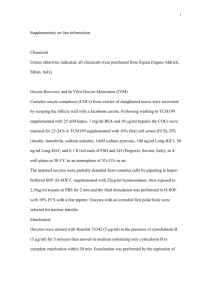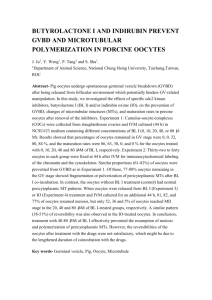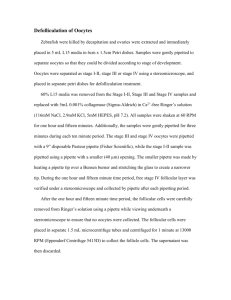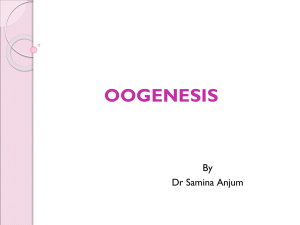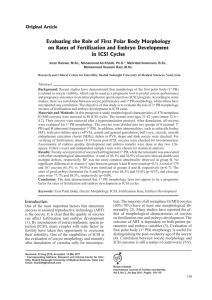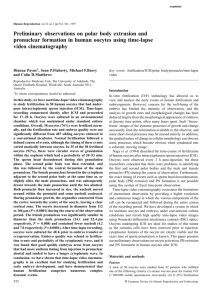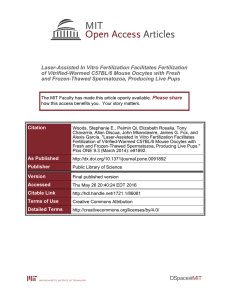Media Release
advertisement
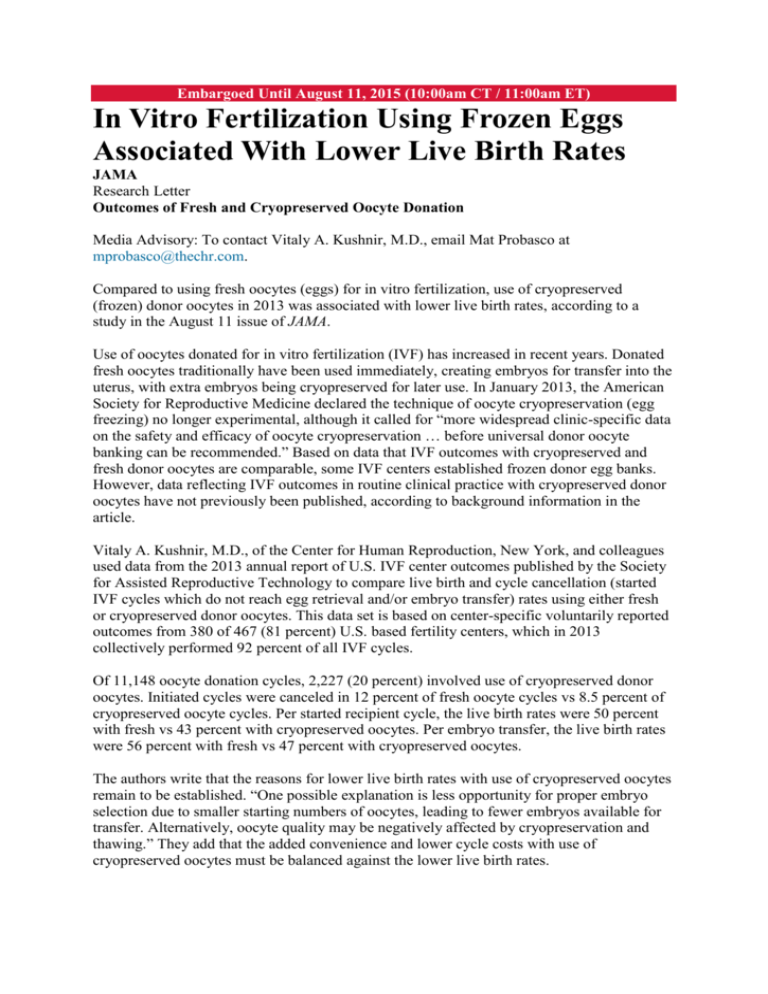
Embargoed Until August 11, 2015 (10:00am CT / 11:00am ET) In Vitro Fertilization Using Frozen Eggs Associated With Lower Live Birth Rates JAMA Research Letter Outcomes of Fresh and Cryopreserved Oocyte Donation Media Advisory: To contact Vitaly A. Kushnir, M.D., email Mat Probasco at mprobasco@thechr.com. Compared to using fresh oocytes (eggs) for in vitro fertilization, use of cryopreserved (frozen) donor oocytes in 2013 was associated with lower live birth rates, according to a study in the August 11 issue of JAMA. Use of oocytes donated for in vitro fertilization (IVF) has increased in recent years. Donated fresh oocytes traditionally have been used immediately, creating embryos for transfer into the uterus, with extra embryos being cryopreserved for later use. In January 2013, the American Society for Reproductive Medicine declared the technique of oocyte cryopreservation (egg freezing) no longer experimental, although it called for “more widespread clinic-specific data on the safety and efficacy of oocyte cryopreservation … before universal donor oocyte banking can be recommended.” Based on data that IVF outcomes with cryopreserved and fresh donor oocytes are comparable, some IVF centers established frozen donor egg banks. However, data reflecting IVF outcomes in routine clinical practice with cryopreserved donor oocytes have not previously been published, according to background information in the article. Vitaly A. Kushnir, M.D., of the Center for Human Reproduction, New York, and colleagues used data from the 2013 annual report of U.S. IVF center outcomes published by the Society for Assisted Reproductive Technology to compare live birth and cycle cancellation (started IVF cycles which do not reach egg retrieval and/or embryo transfer) rates using either fresh or cryopreserved donor oocytes. This data set is based on center-specific voluntarily reported outcomes from 380 of 467 (81 percent) U.S. based fertility centers, which in 2013 collectively performed 92 percent of all IVF cycles. Of 11,148 oocyte donation cycles, 2,227 (20 percent) involved use of cryopreserved donor oocytes. Initiated cycles were canceled in 12 percent of fresh oocyte cycles vs 8.5 percent of cryopreserved oocyte cycles. Per started recipient cycle, the live birth rates were 50 percent with fresh vs 43 percent with cryopreserved oocytes. Per embryo transfer, the live birth rates were 56 percent with fresh vs 47 percent with cryopreserved oocytes. The authors write that the reasons for lower live birth rates with use of cryopreserved oocytes remain to be established. “One possible explanation is less opportunity for proper embryo selection due to smaller starting numbers of oocytes, leading to fewer embryos available for transfer. Alternatively, oocyte quality may be negatively affected by cryopreservation and thawing.” They add that the added convenience and lower cycle costs with use of cryopreserved oocytes must be balanced against the lower live birth rates. The researchers note that these findings need to be viewed with caution because they are based on anonymized aggregate outcomes, which do not allow adjustments for confounding patient characteristics, such as donor and recipient ages, infertility diagnosis, and embryo stage. Editor’s Note: Please see the article for additional information, including other authors, author contributions and affiliations, financial disclosures, funding and support, etc. ### To place an electronic embedded link to this study in your story This link for the study will be live at the embargo time: http://jama.jamanetwork.com/article.aspx?doi=10.1001/jama.2015.7556



